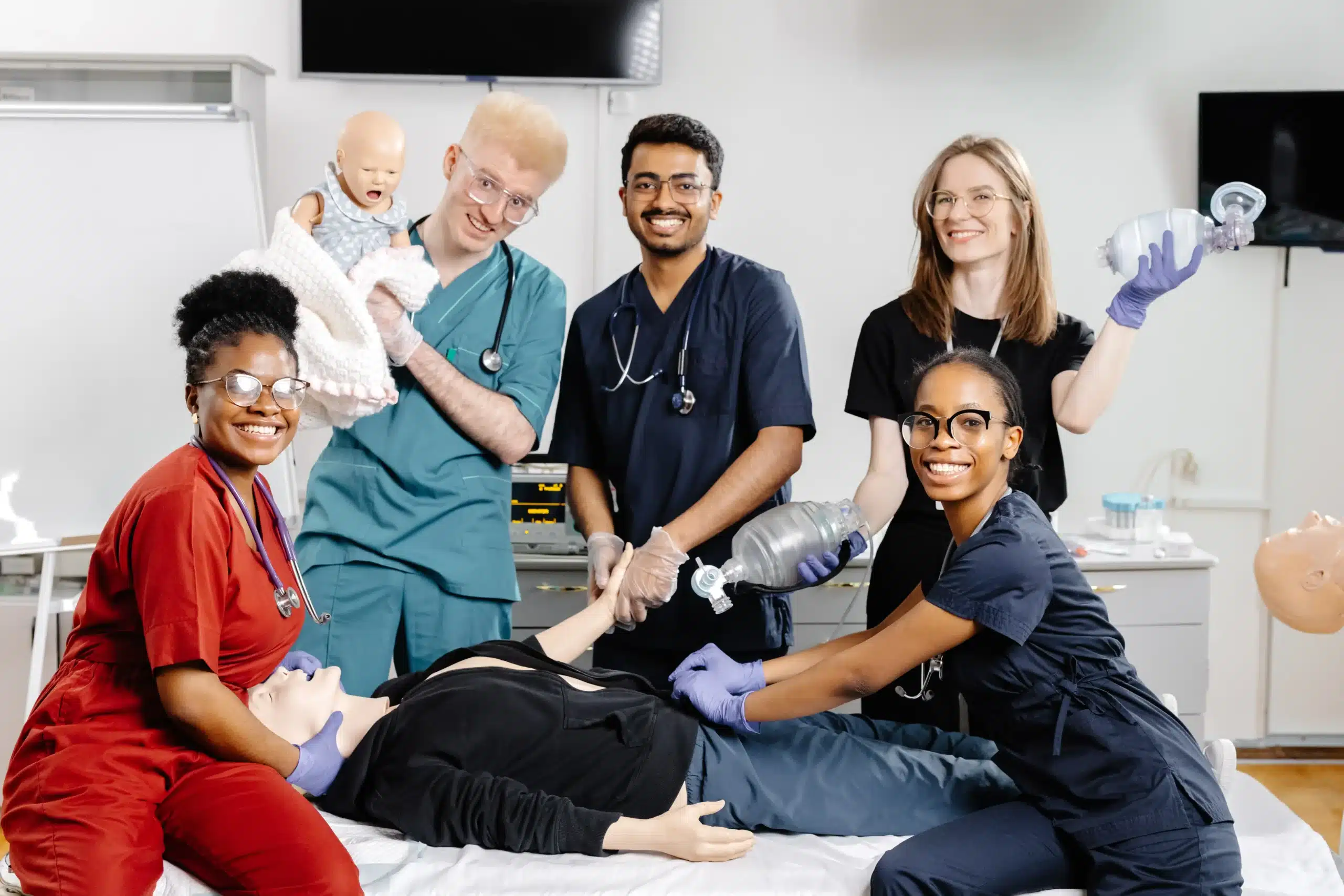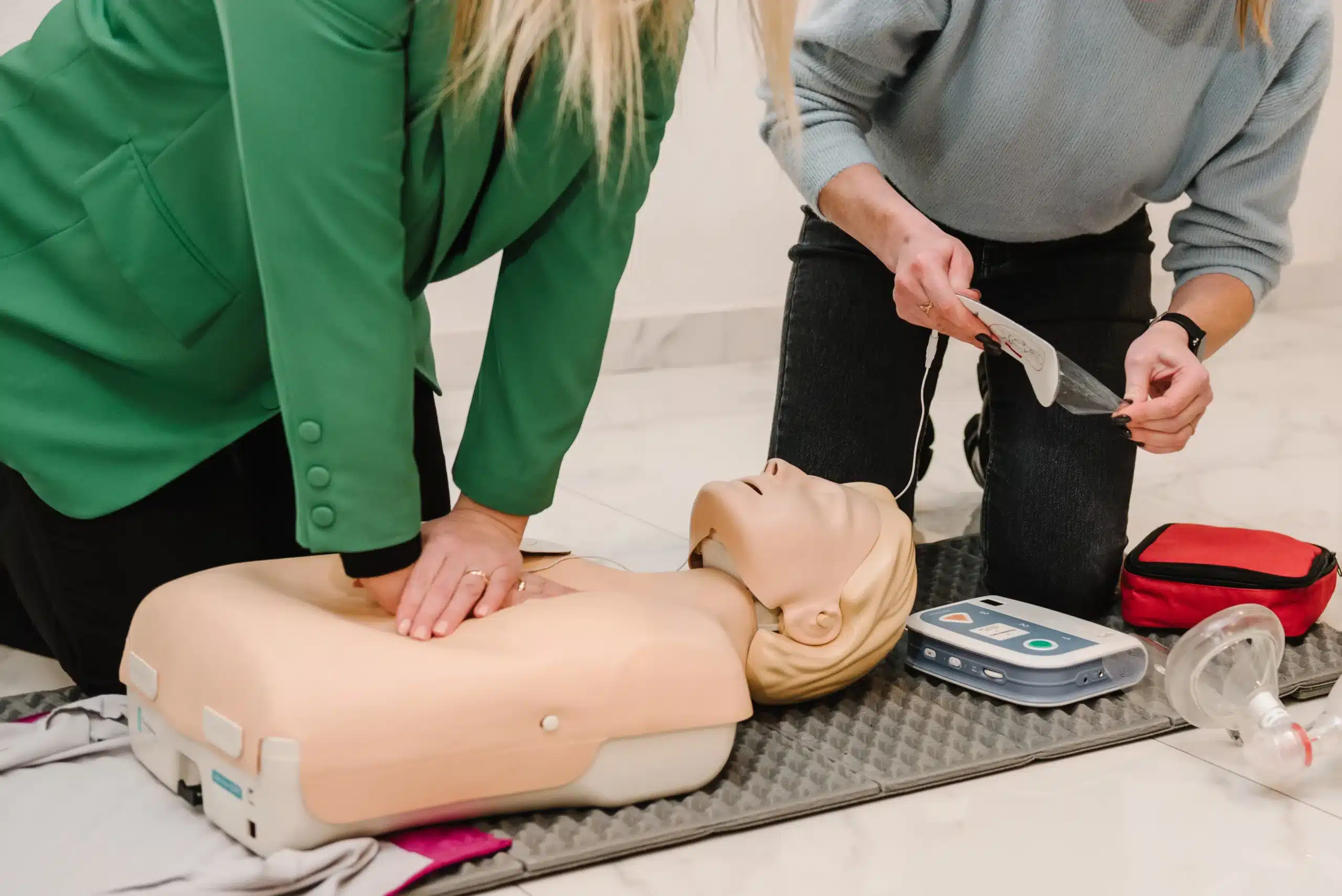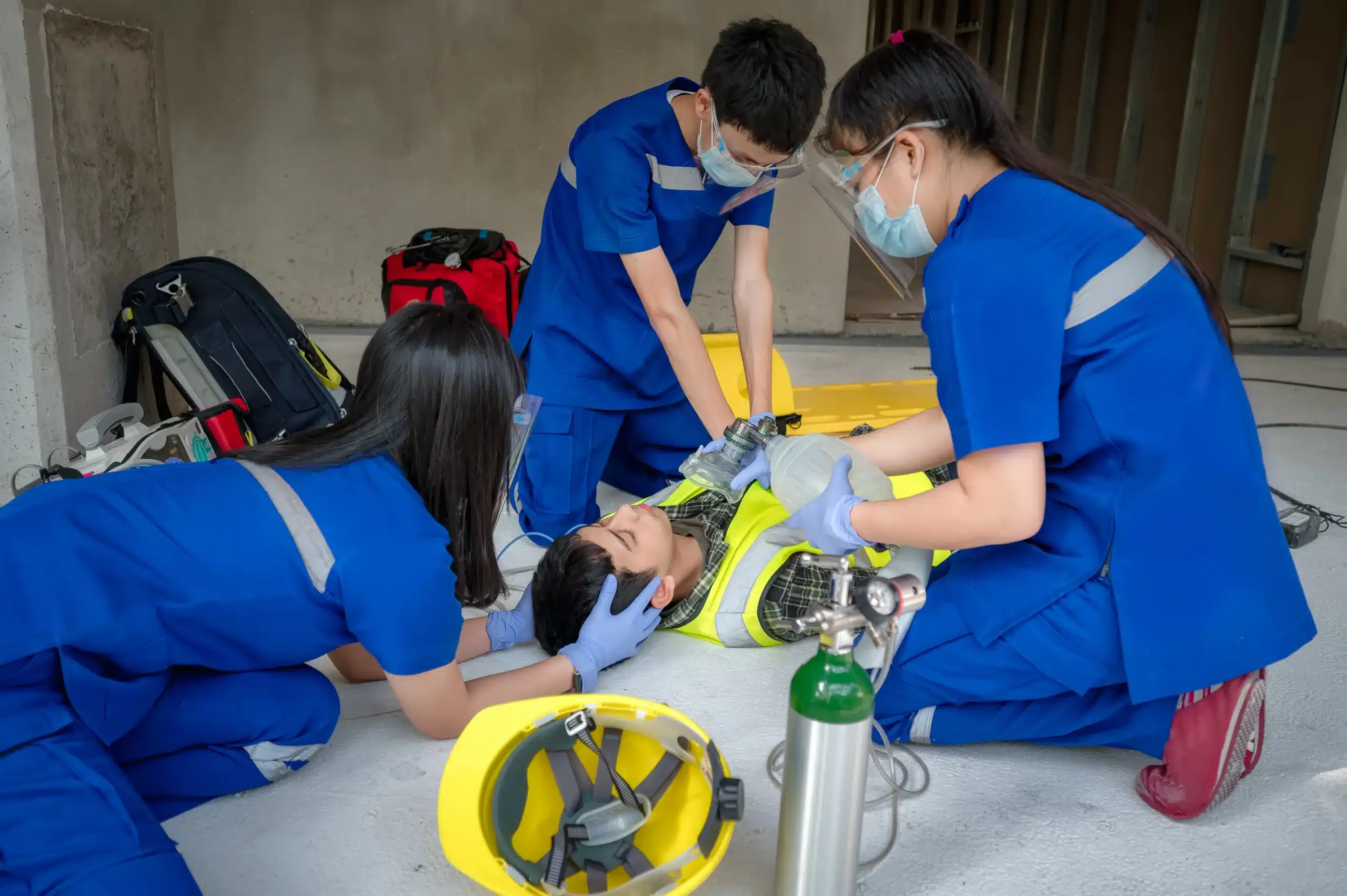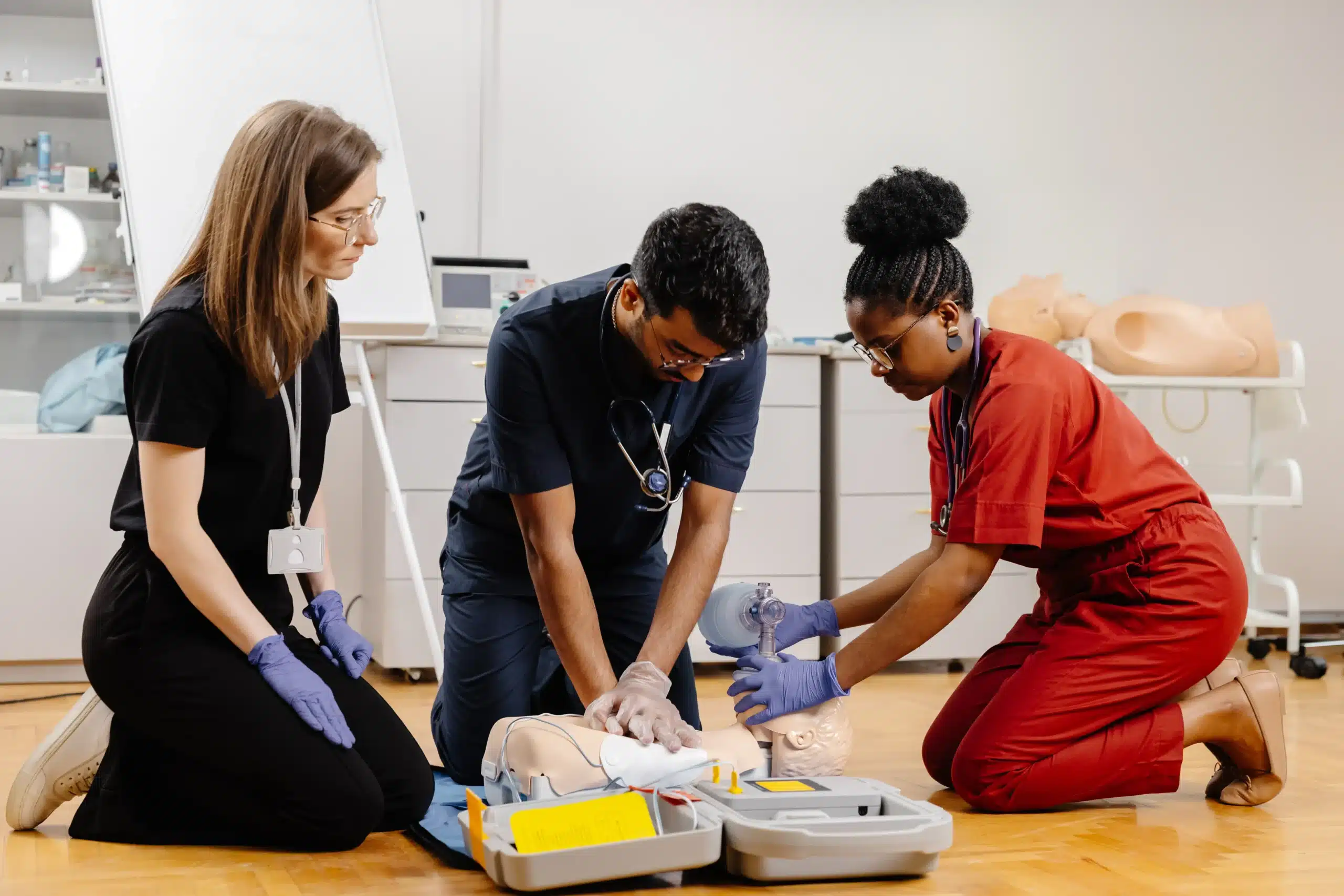As a healthcare provider, you know that pediatric emergencies demand quick thinking and decisive action. PALS Heartcode in Concord provides the training you need to confidently handle these critical situations. This blended learning program combines the flexibility of online modules with the practical experience of in-person skills sessions. This post breaks down everything you need to know about PALS Heartcode, from prerequisites and course structure to the specific skills and scenarios covered. Whether you’re looking to advance your career, refresh your knowledge, or simply gain the confidence to respond effectively in a pediatric emergency, this guide will help you understand the value of PALS Heartcode training in Concord.
Key Takeaways
- HeartCode PALS blends online learning with hands-on practice: This flexible format lets you complete online modules at your convenience before demonstrating your skills in a practical session.
- PALS equips you with essential pediatric emergency skills: From high-quality CPR to managing respiratory emergencies, you’ll gain the knowledge and confidence to respond effectively to critical situations.
- Stay current with your PALS certification: Renew your certification every two years to maintain your skills and ensure you’re up-to-date on the latest guidelines. Explore continuing education opportunities to further enhance your expertise.
What is HeartCode PALS?
HeartCode PALS is the American Heart Association (AHA)’s blended learning course for Pediatric Advanced Life Support. It’s designed to equip healthcare providers with the knowledge and skills to respond effectively to pediatric emergencies. This course combines online learning with a hands-on skills session, offering a flexible and comprehensive approach to PALS certification. If you’re in the Brentwood, Antioch, or Concord area and interested in getting your PALS certification, HeartCode PALS might be a great fit.
What Defines HeartCode PALS?
HeartCode PALS is distinguished by its blended learning format. The online portion allows you to learn at your own speed, reviewing material as needed. This online component covers essential topics, from recognizing life-threatening conditions in children to administering appropriate interventions. The program then integrates this knowledge with a required hands-on skills session, ensuring you gain practical experience and can confidently apply what you’ve learned. We also offer the American Academy of Pediatrics NRP course for neonatal resuscitation training.
Key Differences from Traditional PALS
Unlike traditional PALS courses, which are typically instructor-led in a classroom setting, HeartCode PALS offers greater flexibility. You can complete the online modules at your own convenience, fitting the training around your schedule. This blended approach allows for a more personalized learning experience. After completing the online portion, you’ll attend an in-person skills session to demonstrate your proficiency in essential PALS techniques. This combination of online learning and hands-on practice ensures you receive comprehensive training and develop the skills necessary to provide effective pediatric advanced life support. For those looking for group discounts, we offer options for discount group classes. We also provide the EMSA Child Care Health & Safety course for childcare providers.
HeartCode PALS Prerequisites and Requirements
Before you jump into a HeartCode PALS course, it’s helpful to understand the requirements. Knowing what to expect upfront makes the process smoother and helps you prepare.
Current BLS Certification
First things first: you’ll need a current Basic Life Support (BLS) certification to enroll in HeartCode PALS. This makes sense, as PALS builds upon those core BLS skills. Think of it as the foundation upon which you’ll develop more advanced pediatric life support techniques. The American Heart Association emphasizes this by testing students on their child and infant BLS skills as part of the course. If your BLS certification is nearing its expiration date, or if you need to get certified, consider taking a BLS course before starting HeartCode PALS.
Understanding Pediatric Emergency Care
Pediatric Advanced Life Support (PALS) equips healthcare providers with the tools to handle life-threatening situations in children. It’s specialized training focused on the unique needs of young patients. This isn’t just about knowing what to do—it’s about having the confidence to act quickly and effectively in a crisis. PALS covers a wide range of scenarios, from respiratory emergencies to cardiac events, all within the context of pediatric care. You can learn more about the comprehensive nature of PALS training through resources like this guide.
Technical Requirements for Online Learning
If you’re planning to take the online portion of HeartCode PALS, make sure you have the right tech setup. You’ll need a computer or tablet with reliable internet access. It’s a good idea to test your connection beforehand to avoid any last-minute surprises. Also, keep in mind that the online portion is typically non-refundable once purchased, so ensure you’re ready to commit before you begin the online PALS course. Double-checking these details will help you focus on the course material and get the most out of your learning experience.
HeartCode PALS Course Structure and Duration
HeartCode PALS blends online coursework with a hands-on skills session, offering a flexible learning experience that fits busy schedules. You can learn at your own pace and tailor the training to your individual needs.
Online Component Overview
The online portion covers essential pediatric advanced life support topics through interactive lessons, case studies, and simulations. This foundation prepares you for the in-person skills practice. Self-paced learning lets you review material and progress through modules as needed. Learn more about PALS courses on our PALS HeartCode page.
Hands-On Skills Session Details
After completing the online modules, you’ll attend a hands-on skills session lasting approximately five hours with breaks, or closer to four hours and fifty minutes without. You’ll demonstrate competency in core skills like child and infant basic life support (BLS) and apply your knowledge in simulated pediatric emergency scenarios at various learning stations. The American Heart Association offers details on PALS course options.
Time Commitment and Flexibility
The HeartCode PALS format’s key advantage is its flexibility. The online portion adapts to your schedule, while the in-person skills session has a fixed duration. Completion time for the online modules depends on your experience and learning pace. This blended approach makes PALS certification accessible for working professionals. This PALS HeartCode SF guide provides additional certification information for those in the San Francisco area.
Skills and Scenarios Covered in HeartCode PALS
HeartCode PALS isn’t just about checking boxes; it’s about equipping you with the practical skills and knowledge to confidently handle pediatric emergencies. This blended learning course combines online modules with a hands-on skills session, ensuring you’re prepared for real-world scenarios. Let’s explore some of the key areas covered:
High-Quality CPR for Infants and Children
High-quality CPR is the cornerstone of pediatric emergency care. In HeartCode PALS, you’ll master the techniques for delivering effective chest compressions to infants and children, learning the correct depth, rate, and how to minimize interruptions. This focus on quality CPR maximizes the chances of positive outcomes during cardiac arrest.
Using the Pediatric Assessment Triangle (PAT)
Rapid assessment is crucial in emergencies. HeartCode PALS teaches you to use the Pediatric Assessment Triangle (PAT). This tool helps you quickly evaluate a child’s condition based on appearance, work of breathing, and circulation. With PAT, you can prioritize interventions and provide targeted care. The American Academy of Pediatrics offers resources on pediatric health and first aid.
Managing Respiratory Emergencies and Shock
Respiratory distress and shock are common and serious pediatric emergencies. The HeartCode PALS course provides comprehensive training on recognizing the signs and symptoms of these conditions and implementing appropriate treatment strategies. Early intervention is key, and this course empowers you to act swiftly and effectively.
Defibrillation and AED Use
Automated External Defibrillators (AEDs) can be life-saving in cardiac arrest situations. HeartCode PALS covers the safe and effective use of AEDs in pediatric patients, ensuring you’re comfortable with the protocols and prepared to respond in such emergencies. You’ll learn how to quickly assess the situation, operate the AED, and integrate defibrillation into the overall resuscitation effort.
Find HeartCode PALS Courses in Concord
Looking for a convenient and effective way to get your PALS certification? HeartCode PALS blends online learning with in-person skills sessions, offering flexibility for busy professionals. But where can you find these courses in Concord?
Safety Training Seminars Offerings
Safety Training Seminars offers AHA-certified PALS courses in Concord, CA. They provide the complete HeartCode PALS program, including the online portion and the essential hands-on skills checkoff. This localized approach makes it easier to fit the training into your schedule. They also offer other certifications like CPR, First Aid, BLS, and ACLS.
Cost Considerations and Potential Promotions
Typically, PALS HeartCode training costs around $255. This generally covers the online portion, the in-person skills session, and your AHA certification card. Check with Safety Training Seminars directly for the most up-to-date pricing and to inquire about any group discounts.
AHA Certification and Quick Card Issuance
Once you successfully complete both the online modules and the hands-on skills session, you’ll receive your official AHA PALS Provider card. Safety Training Seminars works to issue these cards quickly, often within 12 to 24 hours via email. This ensures you have your certification in hand promptly.
Benefits of HeartCode PALS Certification
Earning your PALS certification, especially through the innovative HeartCode program, offers several advantages, from career growth to stronger life-saving skills. Let’s explore how this certification can be beneficial.
Career Advancement Opportunities
PALS certification demonstrates a specialized understanding of pediatric emergencies, a skill set not covered in basic CPR courses. This specialized knowledge can set you apart from other candidates. Many healthcare roles require this certification, and even if it isn’t mandatory, including PALS on your resume signals your commitment to advanced pediatric care. This can create opportunities for more specialized and higher-paying positions. You can learn more about PALS training and costs in Concord.
Enhanced Emergency Response Skills
The core benefit of PALS certification is the improvement in your ability to respond effectively to pediatric emergencies. The training equips you with the skills to quickly assess and manage life-threatening situations involving infants and children. This leads to improved patient outcomes and increased confidence in your abilities, regardless of whether you’re a healthcare professional or work with children in other settings. This guide on PALS HeartCode in Union City details how this training prepares you to handle these critical situations.
Adaptive Learning Technology Advantages
HeartCode PALS uses adaptive learning technology to personalize your learning experience. The American Heart Association explains how this method uses algorithms to tailor the online portion of the course to your individual learning pace and current knowledge. This allows you to focus on areas needing improvement, making your learning journey more efficient. The adaptive format also provides flexibility in completing the online component, accommodating various learning styles and schedules.
Prepare for Your HeartCode PALS Course
So, you’re ready to pursue your PALS HeartCode certification—fantastic! This blended learning experience combines online coursework with a hands-on skills session, offering flexibility and a comprehensive approach to pediatric advanced life support. To make the most of your training, here’s how to prepare:
Study Materials and Resources
The HeartCode PALS course uses several resources to enhance learning. The core component is the online portion, covering essential topics like high-quality CPR, the pediatric assessment triangle, and managing respiratory emergencies. You’ll find interactive modules, case scenarios, and simulations within the online platform. Many students find it helpful to review basic pediatric BLS skills before starting the PALS curriculum. The American Heart Association website offers additional information and study aids.
Tips for Success in Both Online and Hands-On Components
HeartCode PALS offers a unique learning experience, and a little preparation goes a long way. First, find a quiet, distraction-free space for your online learning. Work through the modules at your own pace, taking notes and reviewing key concepts. This online portion builds the foundation for the hands-on skills session. When you arrive for the in-person portion, be ready to actively participate. Ask questions, engage with the instructors, and practice the skills until you feel confident. The hands-on session typically lasts around five hours, including breaks, so bring any necessary personal items. You’ll be tested on core skills like infant and child BLS, so ensure you’re comfortable with those procedures. While testing on case scenarios during the hands-on portion might be optional, practicing them helps solidify your knowledge. This helpful FAQ document offers more specific details on what to expect. Preparing for both the online and hands-on components will set you up for success in your HeartCode PALS course.
Maintain Your HeartCode PALS Certification
Keeping your PALS skills sharp is crucial for providing the best possible care, so staying on top of your certification is essential. This section covers what you need to know about renewing your HeartCode PALS certification.
Renewal Requirements and Validity Period
Your PALS certification is valid for two years, regardless of whether you earned it through HeartCode or a traditional classroom course. To maintain your PALS credentials, renew your certification before it expires. This ensures you’re current on the latest guidelines and proficient in pediatric advanced life support. You’ll receive your new PALS provider card quickly, often within 24 hours of successful course completion. For example, Saving American Hearts typically issues cards within 12 to 24 hours, but it’s always best to confirm the timeframe with your chosen provider.
Continuing Education Options
Staying current with advancements in pediatric care is easier than ever with various continuing education options. Many online PALS courses offer continuing education credits, a convenient way to maintain other professional certifications. The American Heart Association offers a digital resuscitation portfolio, including HeartCode, HeartCode Complete, and the Resuscitation Quality Improvement (RQI) program. These programs provide flexible options for BLS, ACLS, and PALS recertification and ongoing skills maintenance. These digital tools are valuable resources for staying proficient in life-saving techniques.
Related Articles
- PALS HeartCode Brentwood: Your Certification Guide – Brentwood CPR Classes
- PALS HeartCode Antioch: Your Certification Guide – Brentwood CPR Classes
- Online PALS Classes in Concord: Your Guide – Brentwood CPR Classes
- Pediatric Advanced Life Support (PALS) in Concord – Brentwood CPR Classes
- AHA PALS Classes in Brentwood, CA – Brentwood CPR Classes
Frequently Asked Questions
What exactly does “blended learning” mean in the context of HeartCode PALS? Blended learning combines online self-paced learning with a required in-person skills session. You’ll cover the core PALS content online, then demonstrate your skills and knowledge during a hands-on session with an instructor. This approach offers flexibility while ensuring you gain practical experience.
If I’m already comfortable with BLS, do I still need to renew it before taking HeartCode PALS? Yes, a current BLS certification is a prerequisite for HeartCode PALS. Even if you feel confident in your BLS skills, the AHA requires a valid BLS certification to enroll in PALS. PALS builds upon those foundational skills, and the course includes testing on child and infant BLS.
How long does it take to complete the online portion of HeartCode PALS? The online modules are self-paced, so the completion time varies depending on your learning style and how much time you dedicate each day. Some people finish in a few days, while others prefer to spread it out over a longer period. The flexibility is designed to fit your schedule.
What kind of equipment do I need for the hands-on skills session? You don’t need to bring any special equipment to the skills session. The training center will provide everything necessary, including mannequins, AED trainers, and other simulation tools. Just arrive ready to learn and practice your skills.
How soon after completing the course will I receive my PALS provider card? Most providers, including Safety Training Seminars, aim to issue PALS cards quickly, often within 24 hours of successful course completion. The card is typically sent electronically, so you’ll have digital proof of your certification readily available. It’s always a good idea to confirm the specific timeframe with your course provider.








